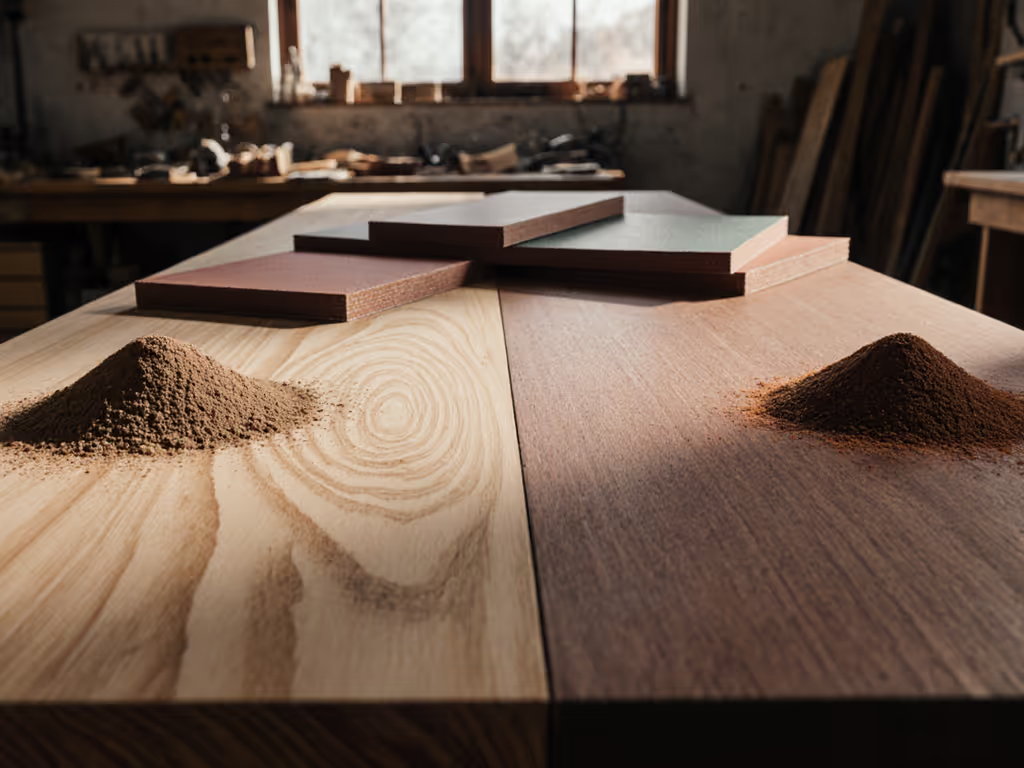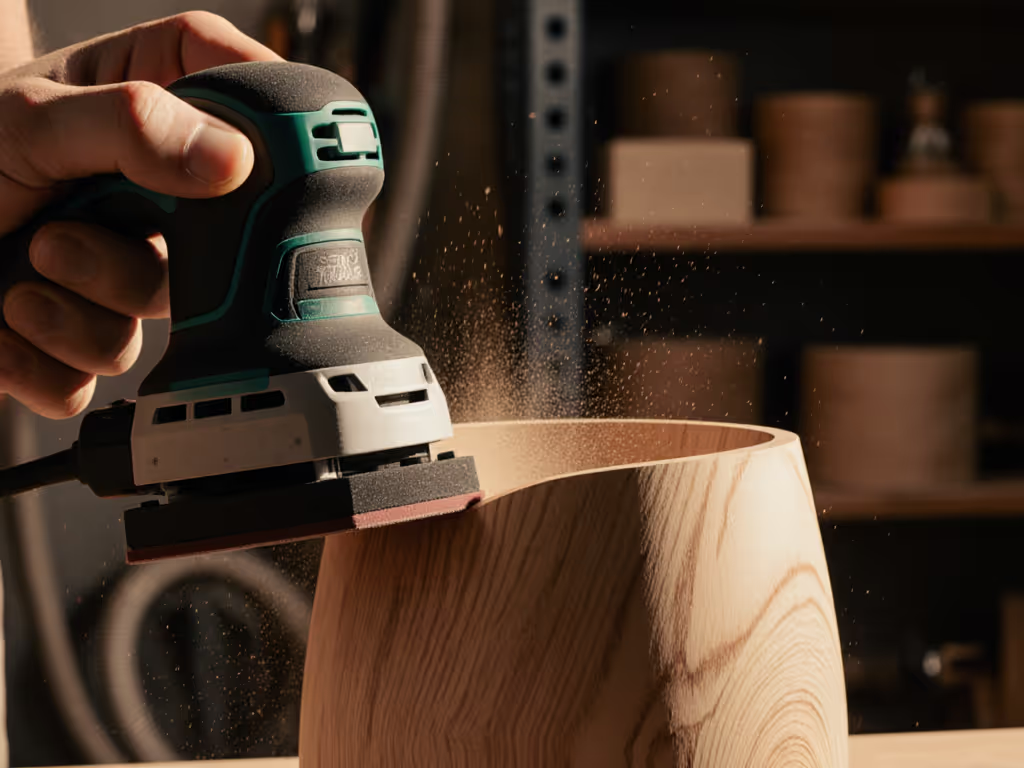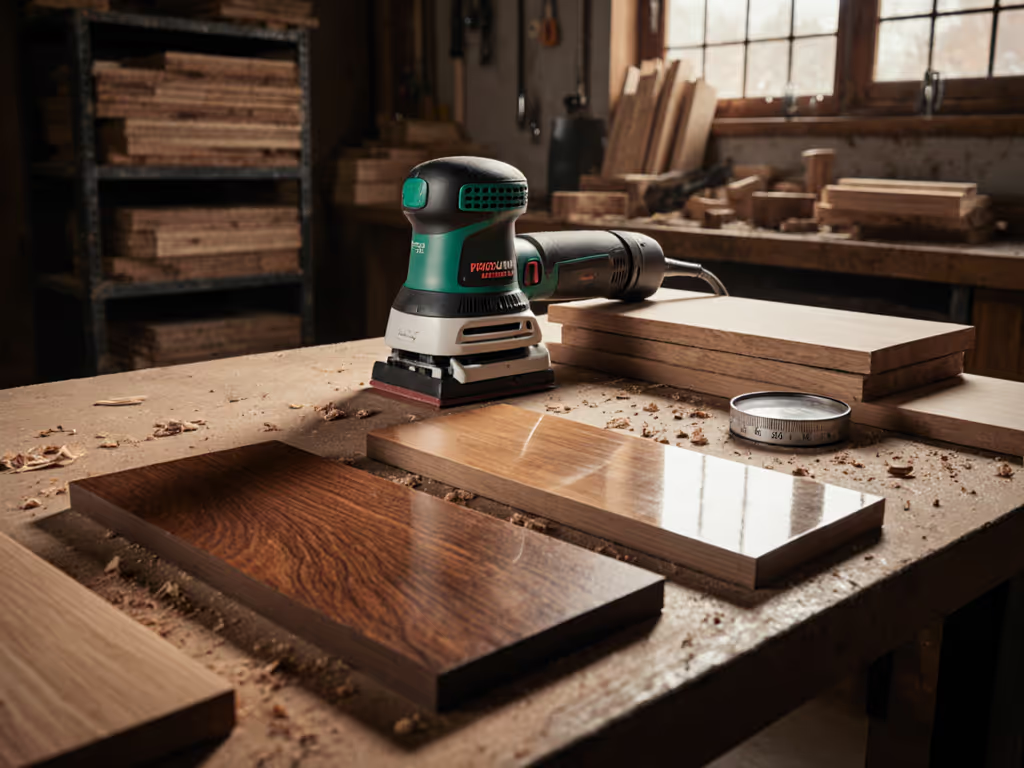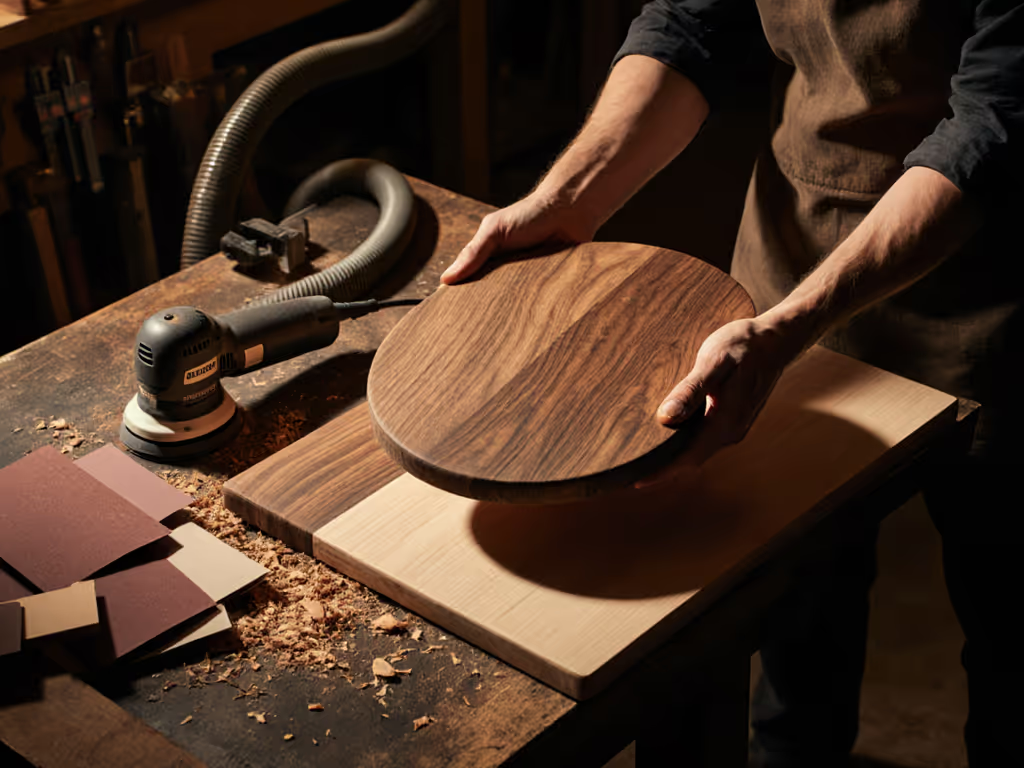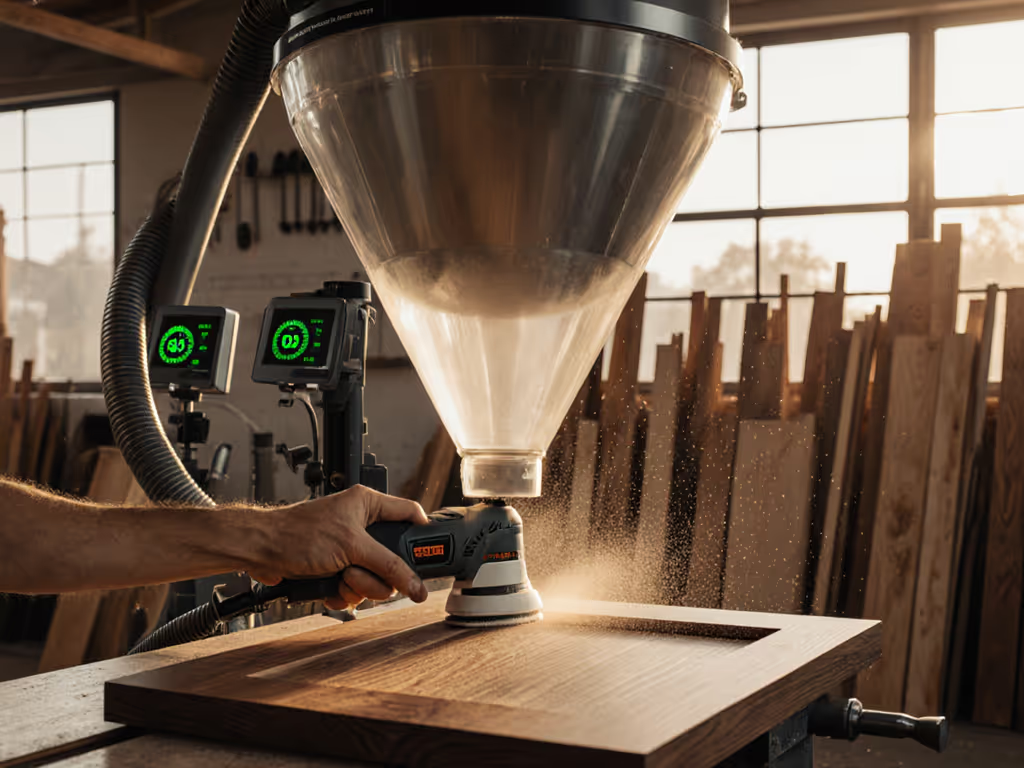
Sander Noise Levels: OSHA Limits & Quiet Tool Solutions
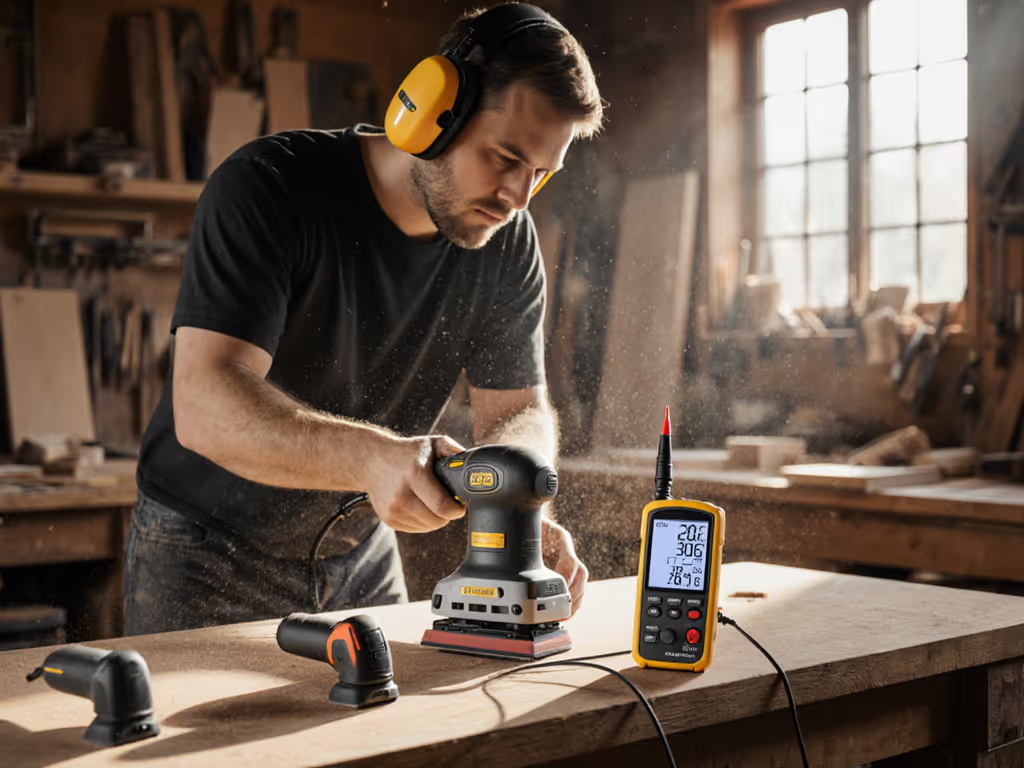
When your cabinet refinisher's hands stay warm and alert through the third coat, and the client's baby naps undisturbed in the next room, you've nailed more than just the sanding grit. Sander noise levels dictate both crew health and finish quality, especially when using quiet power sanders that keep jobsite chaos below the radar. Let's unpack OSHA thresholds and practical noise control that actually saves time. For essential PPE and safe operating habits that complement noise control, see our power sander safety guide. Because true professionals know: protect hands, lungs, and tempo; the finish will follow.
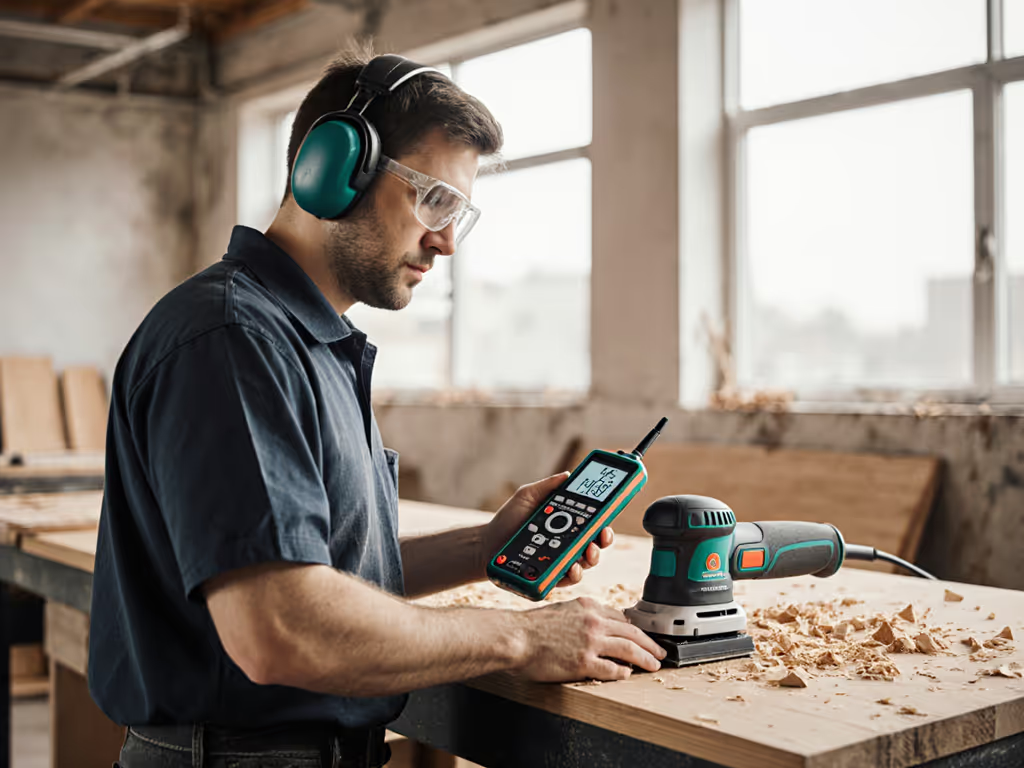
Why Your Ear Matters as Much as Your Eye
Noise isn't just annoying; it's a stealth quality killer. That low-frequency rumble from belt sanders or aggressive random orbits doesn't just risk hearing damage; it masks subtle audio cues revealing swirl marks under primer. More critically, OSHA noise exposure limits for construction (90 dBA TWA over 8 hours) are dangerously outdated. NIOSH recommends 85 dBA, and Washington State's stricter 85 dBA limit proves many pros are already operating in a compliance gray zone.
Here's what the data shows:
- 85 dBA: Action level for hearing conservation programs (mandatory in WA, recommended everywhere)
- 90 dBA: OSHA's current PEL, but every 5 dBA increase halves safe exposure time. At 95 dBA? Only 4 hours allowed.
- 100+ dBA (common with palm sanders on MDF): Under 2 hours before permanent damage risk spikes.
Remember that apprentice whose hands went numb during school renovations? Same principle applies to ears: cumulative exposure steals precision before alarms trigger.
FAQ Deep Dive: Noise, Compliance, and Finish Quality
Q: How do I measure real sander noise exposure when jobsites have overlapping tools?
A: Forget single-point dBA readings. Track dBA at ear and dose % using your phone's OSHA-approved app (like NIOSH SLM) while simulating full workflow: sanding, hose drag, vacuum startup. Example: Your 82 dBA orbital might hit 88 dBA when combined with extraction hose vibration. Calculate m/s² A(8) with exposure minutes for vibroacoustic stress (yes, noise and vibration fatigue compound). To reduce vibration at the source, compare models in our low vibration sanders comparison before setting exposure limits. If your crew hits >80% dose before lunch, rotate tasks or deploy engineering controls.
Q: Can quieter tools really maintain productivity?
A: Absolutely, if you redefine "speed." That 3 dBA drop isn't just compliance; it's avoiding the "why is my floor buzzing?" callback. Low noise sanding tools with under 78 dBA (like 5mm random orbit models with rubber dampeners) let crews work longer without fatigue-induced errors. In our school project, switching to quieter sanders shrank the punch list by 22% (not because we sanded faster, but because no one missed edges while fighting noise-induced tunnel vision).
Q: What noise reduction techniques work indoors without slowing us down?
A: Prioritize system-level fixes over earplugs alone:
- Engineering Controls:
- Use sanders with integrated sound baffles (cuts 3-5 dBA)
- Balance hose weight with suspension systems (swinging hoses add 6-8 dBA)
- Prefab acoustic barriers for fixed stations (e.g., cabinet spray rooms)
- Administrative Tweaks:
- Rotate crews every 45 mins when dBA at ear exceeds 85
- Schedule loud tasks during low-occupancy hours (e.g., client lunch breaks)
- Mandate 10-min quiet breaks hourly, proven to reset auditory fatigue
- Tool Tactics:
- Swap belt sanders for 3mm random orbit on veneers (drops 10-12 dBA)
- Use mesh abrasives, they clog less, reducing motor strain/noise spikes
Exposure within limits isn't passive compliance: it's active quality control. One carpenter told me: "My finish improved when I stopped hearing the sander."
Q: How strict must hearing protection be for indoor sanding?
A: If your sander noise levels hit 85+ dBA TWA (likely with >1hr/day use), NIOSH recommends earmuffs plus earplugs. But here's the pro insight: respiratory class (P2/P3) masks already dampen high frequencies, so pair them with low-profile muffs (<280g) to avoid pressure points during overhead work. Crucially, never sacrifice fit for comfort. A poorly sealed muff at 87 dBA delivers less protection than well-fitted muffs at 92 dBA.
Quiet Tools = Fewer Callbacks, Not Just Happier Ears
That whisper-quiet sander isn't "slower", it's smarter. When noise stays below 82 dBA, crews detect subtle "hiss" changes signaling abrasive loading or uneven pressure. Mesh paper's mesh abrasive loading % becomes audible before scratches form, preventing rework. For quieter, smoother running over time, follow our sander maintenance checklist to reduce dust buildup and vibration. And clients? They notice the absence of vibration in handrails or cabinet doors, proof you didn't brute-force the finish.
One high-end remodeler pivoted to quiet power sanders after a hotel job where dust complaints masked noise complaints. If dust is your bottleneck, dial in a HEPA sanding setup to keep air clear while you chase quieter workflows. His ROI? 30% fewer finish callbacks, plus clients paying 15% premiums for "silent refinishing." His secret? Treating noise reduction techniques like dust capture: systematized, measured, and non-negotiable.
The Real Finish Line
Healthy hands and lungs aren't just ethical, they're prerequisites to professional finishes. When noise drops below 85 dBA, fatigue recedes, audio precision returns, and clients trust your "invisible" work. Track dBA at ear and dose % like you track mg/m³ vs OEL references for dust. Because in the end, risk isn't just about compliance, it's about whether your crew's hands (and ears) will still deliver flawless work at 55.
Want deeper tools? OSHA's Noise Construction Pocket Guide details actionable exposure math. Or calculate your crew's true noise dose with NIOSH's free Sound Level Meter app, then compare against your "quiet" sander's specs. Ask yourself: Is that 3 dBA reduction just noise control, or your next quality win?

